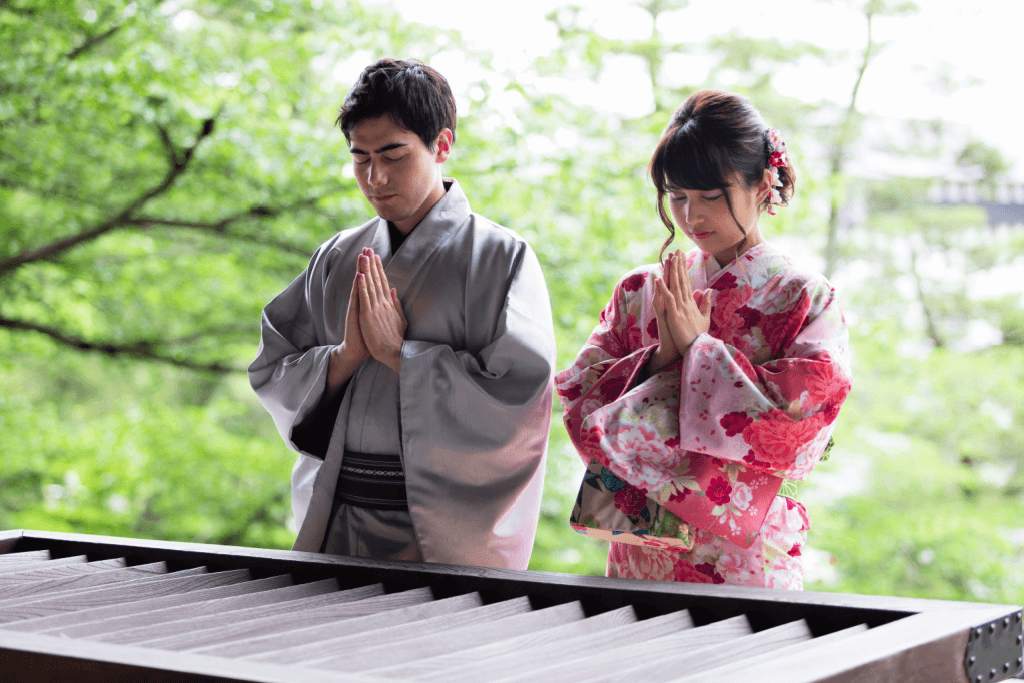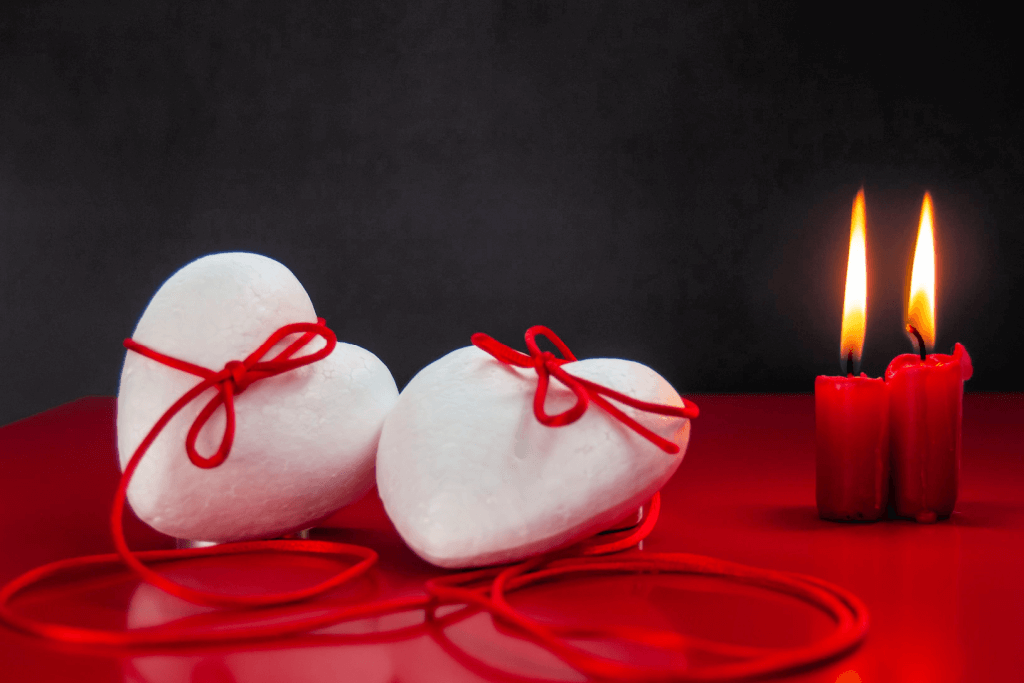The legend of “The Red Thread of Fate” has been told for centuries. And it continues to be an essential part of traditional romantic customs across Japan. A red thread represents human connections, friendship, family, and true love. Through amazing storytelling, the legend inspired people to share their hearts and appreciate good relationships.
Table of Contents
ToggleWhat is the legend?
According to the legend, an old man lives on the moon. When he visits Earth, he shows people their futures and whom they’re destined to meet. He does this by exposing the red thread between destined lovers. The string may sometimes become tangled due to difficult circumstances or stretched by distance. But, eventually, the “Red Thread of Fate” always tightens to bring together destined partners. As a result, this invisible red string can never be broken.

The connection is not limited to romance because people connected by the red string of fate may share a life path. They may achieve something great together. On the other hand, it can be someone you help or who helps uniquely. It can also be someone you are fated to have a deep connection to. Though the legend has many origin stories, they all relate to the old man. He is sometimes called the “moon god” and visits on moonlit nights.
The Stone-Throwing Boy
In one legend, a boy meets an old man walking under the moonlight. The moon god shows the boy his future wife – a nearby young girl. Embarrassed, the immature boy throws a stone at the young girl, hitting her in the head before running away. On his wedding night many years later, he lifts her veil for the first time. He notices a scar near her eyebrow and realizes it is the same girl.
The Man Seeking A Rich Wife
In a similar story, a young man seeks a rich wife and asks the moon god whom he will marry. The old man points to a red thread connecting him to a poor young girl. Upset, the young man orders her to be killed and leaves the village in disgust. When he finally marries a rich woman, he asks about a scar on her forehead. She tells him a story about being attacked for no reason as a young girl. He suddenly realizes she is the same girl and begs forgiveness. She forgives him, and they have a happy life together.

The Rejected Girl
Another story tells of a girl who confesses her love to a boy. He rejects her, and the girl runs away into the night. She meets the moon god and learns she is still connected to the boy by the Red Thread of Fate. Later in life, she falls in love with a man who accepts her proposal. After they become married, he expresses regret at cruelly rejecting a girl when he was very young. They realize she is the girl, and he asks for her forgiveness, which she gives happily.
Are you looking for some delicious snacks this Valentine’s Day? Check out Sakuraco! Sakuraco delivers traditional Japanese snacks, teas, sweets, and snacks from Japan to your door every month so that you can enjoy Japan’s taste anywhere!
Where did it come from?
Long ago, people discovered that a blood vessel directly connects the heart to the smallest finger on the hand. This is now called the ulnar artery, and it carries blood containing oxygen down the forearm to the “pinky” finger. The belief soon arose that everyone’s hearts are connected via the little finger. Eventually, this connection became an invisible red string that ties people together, connecting them through destiny.
Are there any shrines where you can tie the red thread of fate?
Kawagaoe Hikawa Shrine in Kawagoe, Saitama Prefecture, is probably Japan’s most well-known “love shrine”. According to legend, 1500 years ago, the Iruma river that ran through the shrine grounds glowed a mysterious blue color. People believed this to be the work of the Hikawa god and followed the river to its source. The shrine was built at the source in the god’s honor. Today, the river is illuminated to recreate the event. The shrine’s importance led to the prefecture making it an official cultural asset.

In Japan, people believe the wind carries love, so the shrine incorporates numerous wind-themed decorations. The most famous among them is the tunnel called furin kairo. During summer, it adorns itself with hundreds of wind chimes and 888 colored pinwheels or kazaguruma (considered lucky for romantic relationships). The corridor, stretching for 10 meters, features hundreds of wooden plaques (ema) where people express their wishes for love.
The shrine also sells other fortunes (omikuji) and charms. Visitors “catch” fish-shaped fortunes called “Red Snapper” (tai mikuji) from a bucket for good luck in relationships. Also, it is popular to purchase charms called omamori for good luck in finding a husband or wife. And, of course, the “red pencil” (akai enpitsu) draws the Red Thread of Fate. As a result, the pencil becomes shorter as it is used, just like the thread connecting two future lovers.
Why is the legend of the red thread of fate so special?
The legend is similar to the idea of a “soulmate.” Across the world, there is the belief that some people are “destined to meet.” Even children hook their little fingers and “pinky swear” to seal a vow that should never be broken.

On the surface, the Red Thread of Fate may seem like a romantic fairy tale. But it is an essential belief in many Asian cultures, with ties to ancient gods and worship. The story entertains and provides a means to keep old traditions alive.
Additionally, the customs and charms surrounding the legend foster love and bring friends and family together. In times of loneliness, it also gives people hope that someone is out there for them, drawing ever nearer. Do you believe in the Red Thread of Fate? Have you had an experience that convinced you of the red string’s existence? Share in the comments below!











